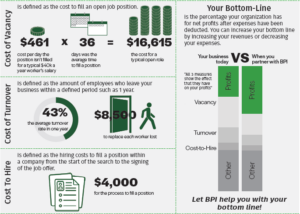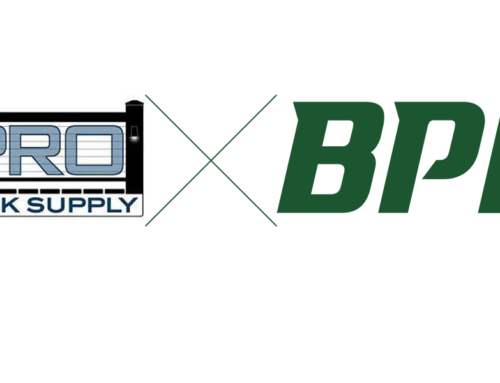
4.1 million Americans quit their jobs in December 2022, according to the Job Openings and Labor Turnover Survey (JOLTS). Albeit startling, this figure is consistent, with similar rates occurring month over month.
A different 2022 survey, conducted by Work Institute, found that the majority (75%) of employee turnover was preventable and that 18% was career-related. In fact, career reasons are often cited as the primary attracter to a new job. Most said they would stay at their current job if their employer invested in their long-term learning and professional development.
This tells us that while employee turnover rates are shockingly high, there is hope for retention if employers take the steps to stack their teams with the right people and train them to be successful. Keep reading to learn how to improve talent acquisition to reduce the cost of hiring a new employee and improve retention.
What Is the Cost of Losing an Employee?
When an employee leaves an organization it can create a lasting impact on their team, business operations, and finances. This is especially true if the company is slow to fill the role. However, the cost of losing an employee is not solely monetary. Here are some of the expenses that may result from losing and replacing a member of your team:

Cost of Vacancy
For businesses in the United States, the cost of vacancy, defined as the cost to fill an open job position, amounts to $461 per day for an employee earning $40,000 a year. Considering the average length of time to fill a position is 36 days, the total cost of vacancy is $16,596 on average.
This expense may be made up of various departure costs, including:
- Exit interviews
- Severance pay
- Increased unemployment taxes
The total cost of vacancy may also account for supplementary expenses for overtime or temporary staffing.
Cost of Employee Turnover
For each worker who leaves an organization, the employer can expect to pay $8,500 to replace them. In addition to this steep monetary cost, turnover can also lead to:
- Lost productivity
- Increased errors
- Unhappy customers
- Lost institutional knowledge
Also, keep in mind that the average turnover rate — specifically regarding employees who leave a business within one year — is 43%.
Cost to Hire
From the start of the search to the signing of the job offer, filling an empty position costs an average of $4,000. Hiring-related expenses may include:
- Additional advertising, recruitment fees, and screening costs
- Drug testing, assessment tests, background checks
- Certifications, uniforms, and informational literature
Even after the offer is signed, the average cost of training is $1,105 per worker per year. So, what can lumber and building materials dealers do to combat the mounting costs of hiring and retaining quality employees? The answer: strategic talent acquisition.

How Strategic Talent Acquisition Can Help Your Lumberyard
According to Forbes Advisor, talent acquisition is a process that “allows companies and organizations to source the very best candidates through a strategized method rooted in the idea of building high-performing teams.” It involves the following steps:
- Sourcing and Lead Generation
- Attracting Candidates
- Interviewing and Assessing Candidates
- Checking References
- Final Selections
- Hiring and Onboarding
The best talent acquisition strategies will greatly benefit your dealership both now and in the long run because they put the right people in the right roles with the right training to bolster their success.
When hiring people who will be assets to your dealership, you must first have a thorough understanding of the different styles of communication. Some employees may be assertive communicators, while others may be passive, but understanding these differences will lead to better productivity, increased retention, and, ultimately, bottom-line growth.
In addition to communication styles, personality tests can also shed light on whether a candidate is a good fit for your team. Personality assessments are another way for you to quickly understand the motivations and skills of potential employees. While using strategy and planning in your hiring process is essential, getting started is not always easy.
It can be expensive and time consuming to ensure you are continually taking a strategic approach to find the right people to join your team. With this in mind, BPI has put together a talent services program to help you find, train, and retain top talent.
What If I Don’t Have the Time or Resources?
If you don’t have the time or resources to find, train, and retain top-notch employees, you can outsource the hiring process and employee retention programs to an organization like BPI that knows your industry and has had past success acquiring top talent.
There are also steps you can take to reduce the cost of hiring while still bringing in top candidates, such as these cost-effective and time-saving ways to hire and keep good employees:
- Prevent employee turnover with retention programs offered by BPI
- Build a talent pool, or a database of qualified and interested candidates
- Ask for referrals from current employees
- Think of creative ways to recruit new employees, such as offering internships or partnering with high schools to offer on-the-job training for students
- Outsource much of the hiring process, such as testing, to BPI
No matter your talent acquisition strategy — whether you do it yourself or leave it to the experts at BPI — keeping costs low while increasing employee retention is a keyway to support your bottom line. Contact BPI to learn more about our Talent Services Program.







